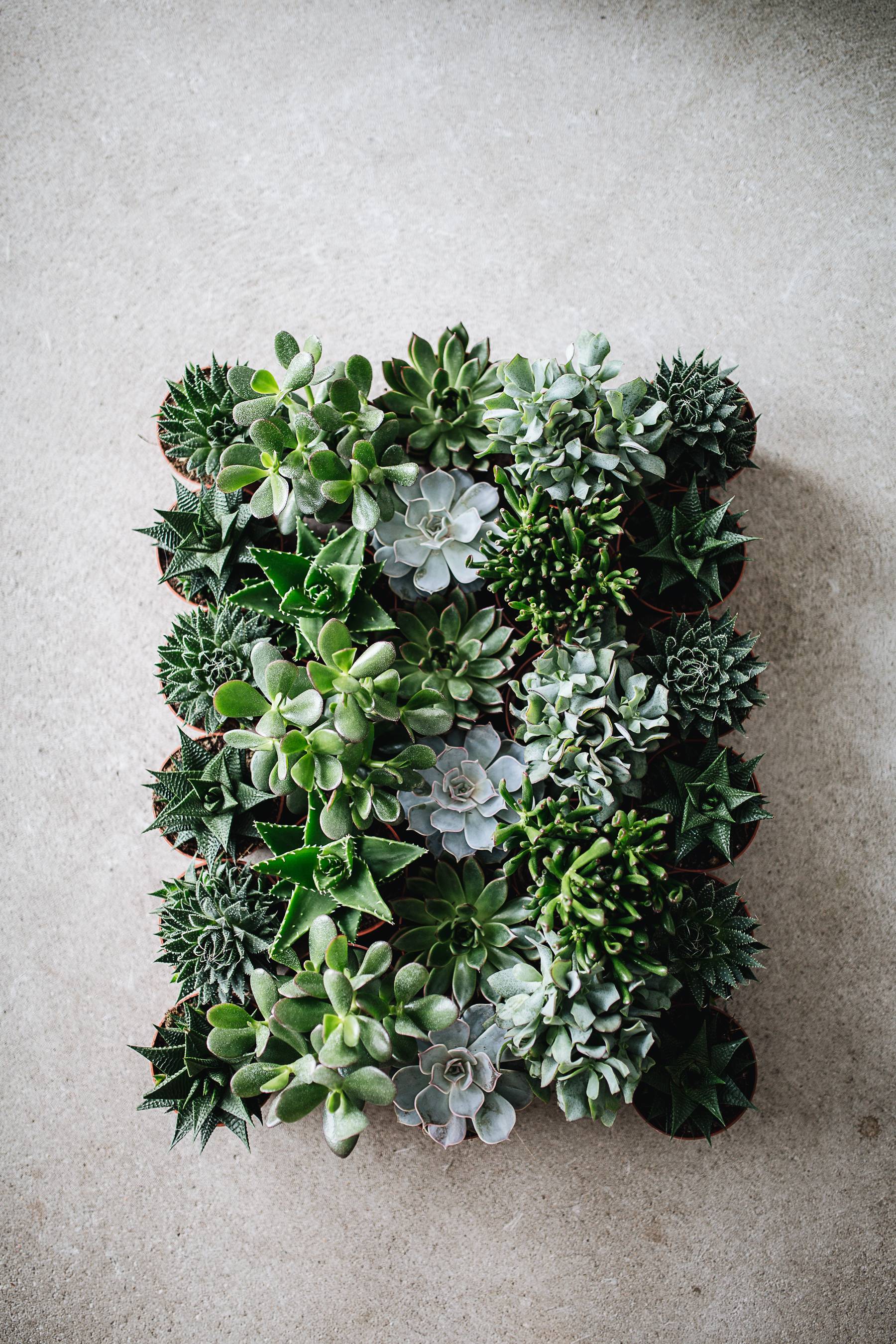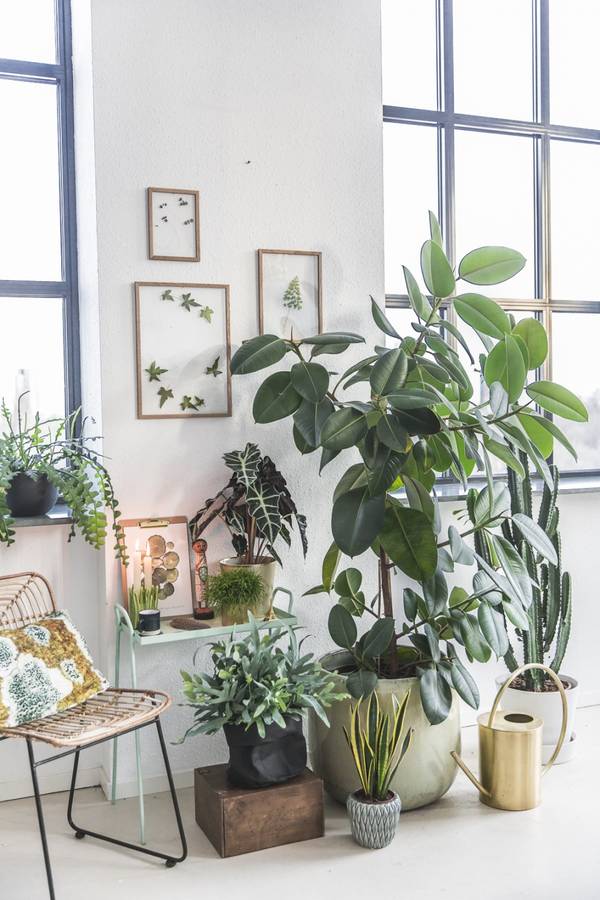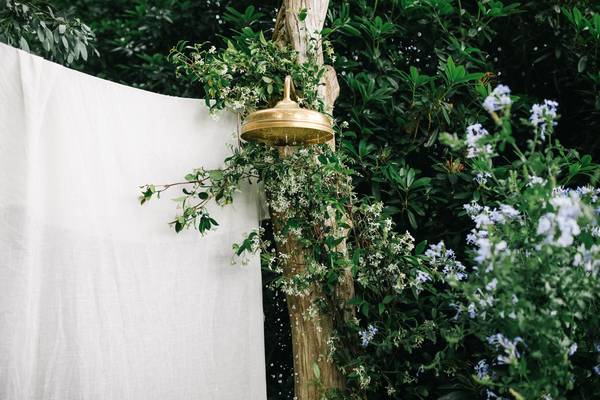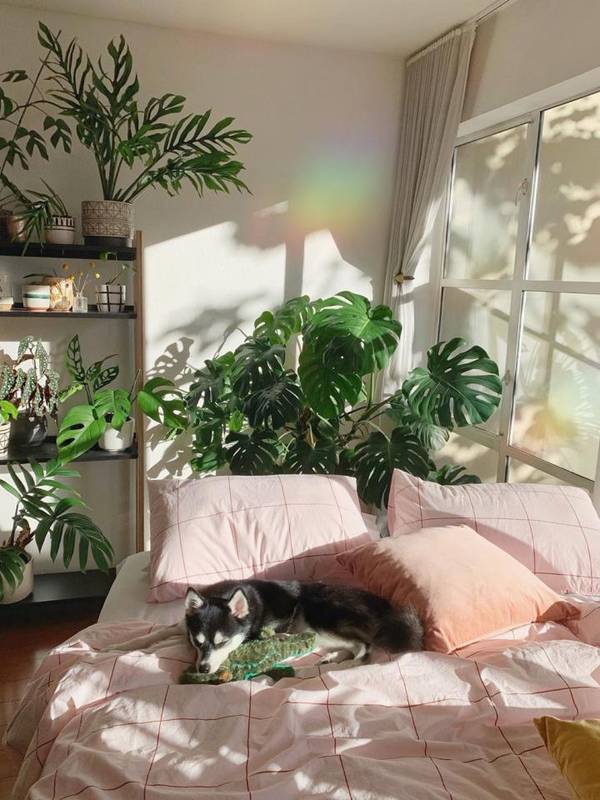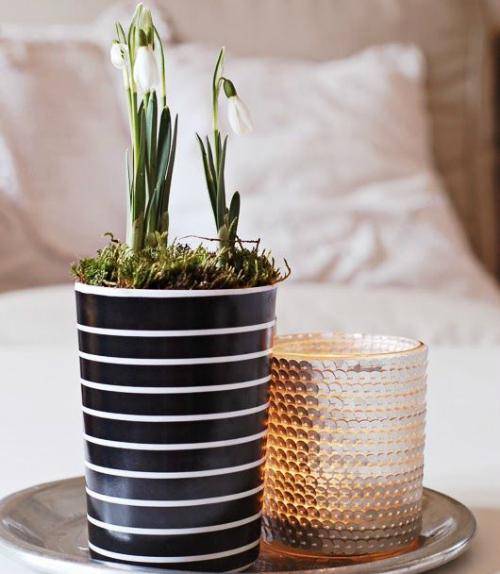
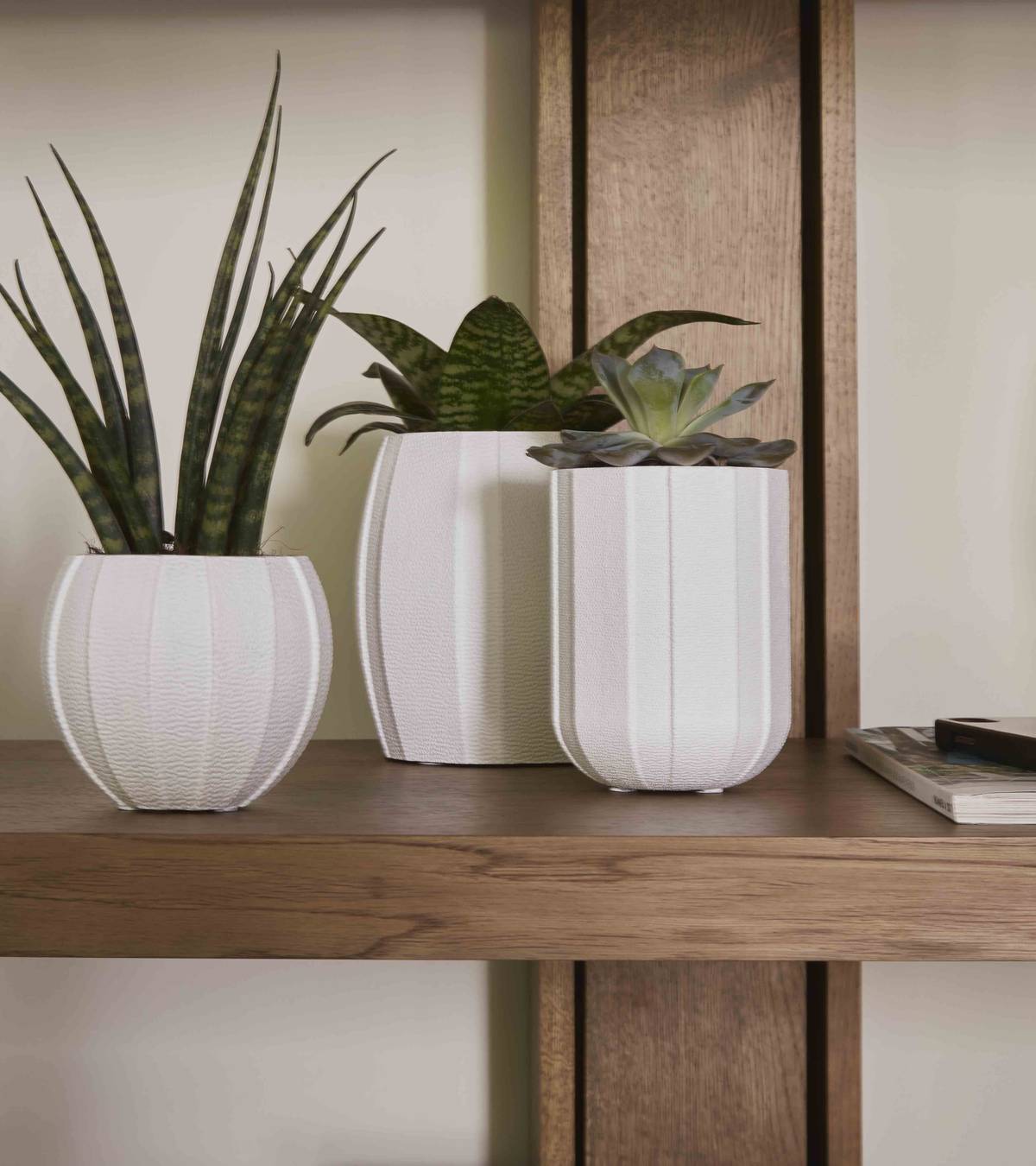
Care succulents
Got succulents in your house? Then of course you want to enjoy them to the maximum. Check out these basic rules and tips for caring for houseplants:
- Succulents like to be in a warm and bright place. For example, on a south-facing windowsill.
- It is better to give a succulent a lot of water in one go and then let it dry out for a few weeks, than to give it a little water every week or every other week.
- Go easy on plant nutrition. In the growing season (spring/summer) a little once a month is enough.
- In the sunny summer months, transplanters can also be put outside (make sure they can't get wet, as they need little water).
How do I water succulents?
These green survivors are known for needing little water. But what is too little? Or too much? It's all about the right balance! We visit a succulent grower, where the grower tells us more about succulents. With the fact-or-fiction game, we present the grower with several statements.
Are succulents poisonous?
Most succulents are non-toxic to humans and animals, making them a popular choice for the home. Nevertheless, some succulents can be mildly toxic. For instance, Crassula (Jade plant) and Kalanchoe can be mildly toxic to dogs and cats in large quantities. Excessive ingestion can cause symptoms such as vomiting and diarrhoea.
Succulents: characteristics and flowering
Succulents come in many different shapes and sizes, ranging from small to large, upright varieties. Succulents can usually be recognised by their fleshy, thick leaves that store water. The colour of succulents ranges from green to grey-blue and even red and purple. In terms of shape and size, succulents are versatile. There are spherical and prickly succulents (such as Cacti), but also small rosette-shaped varieties (such as Echeveria) and large, upright varieties (such as Sansevieria). The flowers can range from small to large and from inconspicuous to colourful. Kalanchoe is a succulent with flowers that bloom for a remarkably long while, for example.

What types of succulents are there?
Succulents are very diverse. They're part of several plant families, including Crassulaceae, Cactaceae, Aizoaceae and Asphodelaceae and Agavaceae. These are the best-known species of succulents, divided by their plant family:
Crassulaceae
- Echeveria: this succulent, also called Mexican rose, can be recognised by its rosette-shaped leaves. This succulent comes in different colours, ranging from light green to dark green, pink and purple.
- Kalanchoe: this flowering succulent, also called desert rose, is a colourful bloomer with oval, green leaves. The edges of these leaves can turn red. Flower colours range from white to yellow, pink, orange and red.
- Crassula: this succulent, also called the Jade plant, has thick, glossy and often oval-shaped leaves. This succulent can have a tree-like shape.
- Sedum (fatwort): sedum, also known as fatwort, is a very versatile succulent. It can range from being ground cover to being an upright plant. Sedum blooms in summer or early autumn with dense umbels of usually star-shaped flowers. The leaves are oval, round or pointed, depending on the species.
Cactaceae
- Cacti: spherical or flat, big or small, tough or cute, green or flowering: anything is possible as far as cacti are concerned! The care of cacti differs slightly from that of other succulent species. This is because cacti needs more light and less water than other succulents.
Asphodelaceae
- Aloe Vera: this succulent is also called the miracle plant because of the medicinal properties attributed to it. Aloe Vera can be recognised by its thick, pointed green leaves with jagged edges.
Asparagaceae (formerly Dracaena)
- Sansevieria (Snake plant): this easy-to-care-for succulent grows in both sun and shade. Snake plant can be recognised by its sturdy, upright leaves, which can have different colours and patterns. The plant is part of the Asparagacea after a 2017 revision in taxonomy (it used to be considered part of the Dracaenaceae family).
Agavaceae
- Agave: this succulent can be recognised by its long, narrow leaves that grow in a rosette shape. The leaves are often grey-green in colour, have a sharp tip and are can be spiny along the edges.
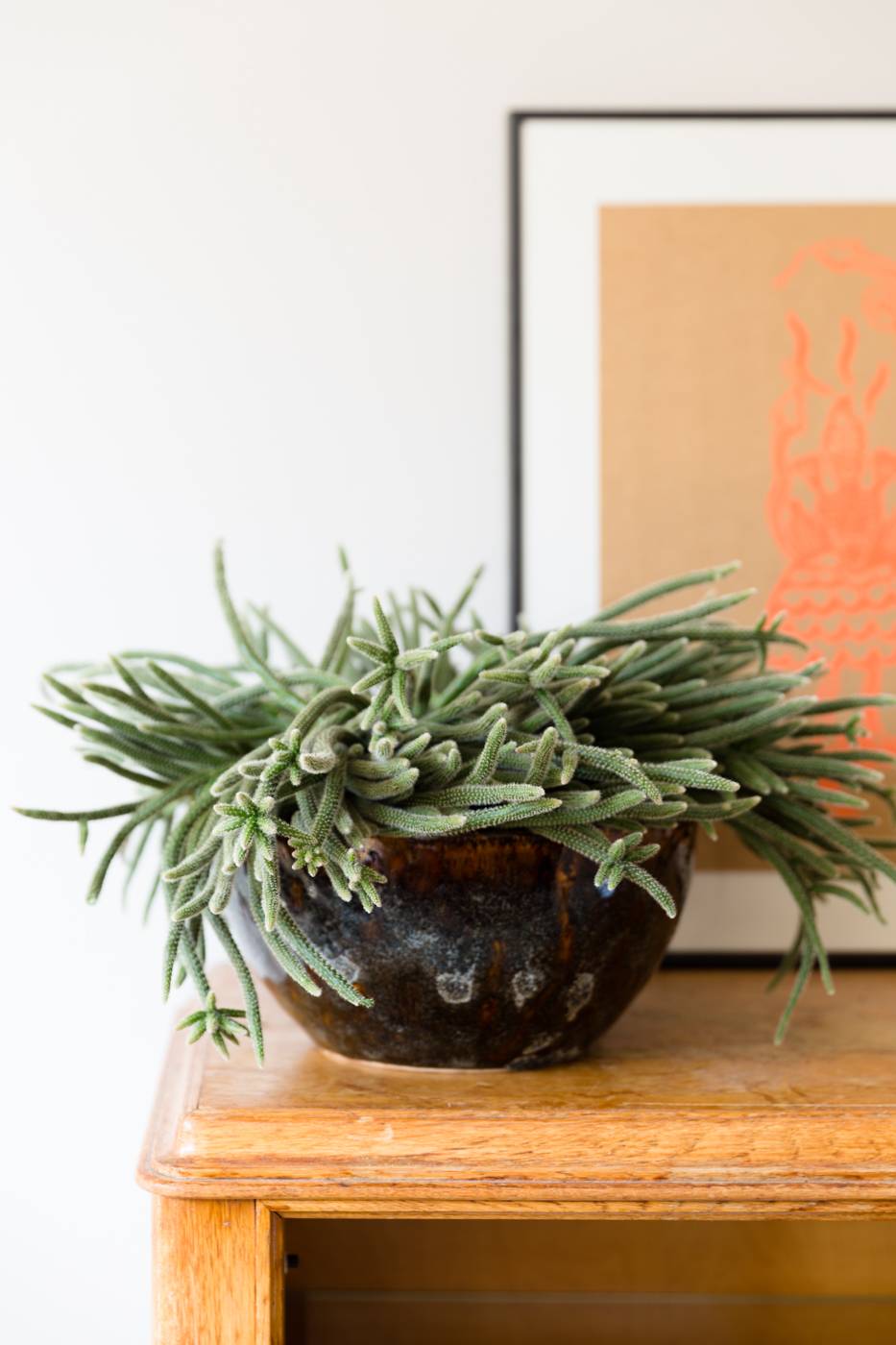
Succulents: caretaking and location
Have you brought home a gorgeous new succulent plant? Check out these basic rules and tips about caring for houseplants, and take a look at our specific succulent tips below:
- Succulents like to be in a warm, light place, such as a south-facing windowsill, for example.
- It's better to give a succulent a lot of water at once and then let it dry out for a few weeks than to water it a little every week or every other week.
- Go easy on plant nutrition. In the growing season (spring/summer) giving a little once a month is enough.
- In the sunny summer months, succulents can also be put outside (make sure they don't get wet, as they need little water).
Are succulents poisonous?
Most succulents are non-toxic to humans and animals, making them a popular choice. Nevertheless, some succulents can be mildly toxic. For instance, Crassula and Kalanchoe can be mildly toxic to dogs and cats in large quantities. Excessive ingestion can cause symptoms such as stomach upset.
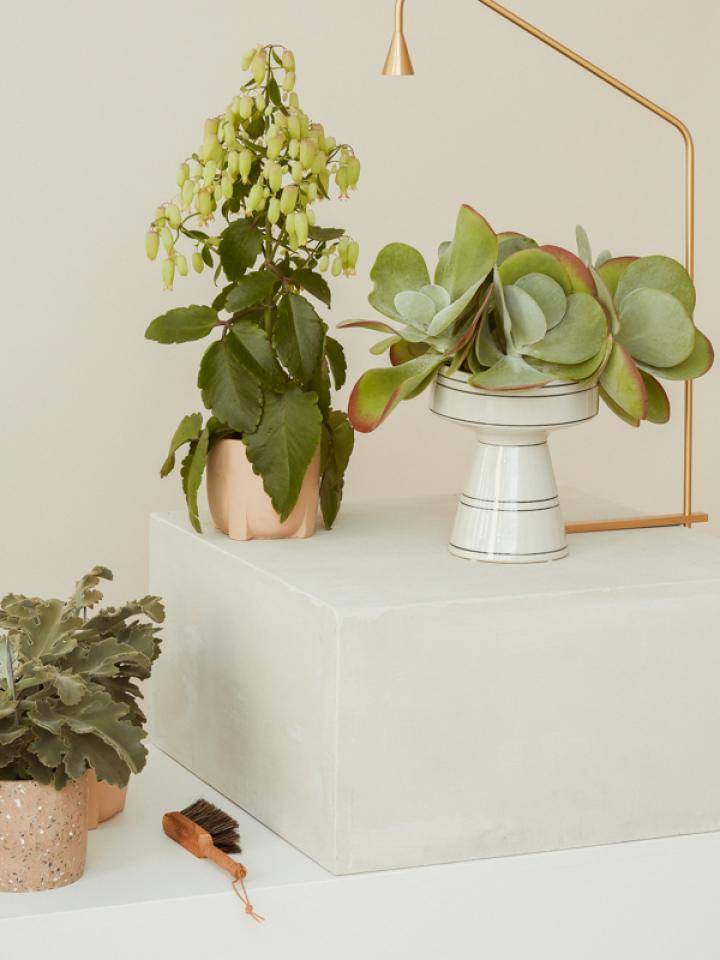
When and how should you take succulent cuttings?
Not only are succulents easy to care for, they're easy to take cuttings from. Read all about taking succulent cuttings and propagation in this article and check out our step-by-step plan for succulents cuttings below:
- You can propagate succulents in different ways, namely by leaf cuttings, stem cuttings and offshoot cuttings.
- For leaf cuttings or stem cuttings, you simply twist off a leaf or side branch from the succulent, let it dry on kitchen paper for a week and then put it into a pot with moist soil. You have the best chance of success by choosing an offshoot cutting. See our step-by-step plan below for more details.
- Some succulents, such as Aloe Vera, cannot be propagated by leaf cuttings or stem cuttings. In that case, you have to opt for offshoot cuttings.
Succulent symbolism
There's no overarching symbolism for all varieties of succulent. Various symbolic meanings are assigned, dependent on culture and context.
- Strength and resilience: succulents are able to survive in extreme conditions such as drought and heat. This makes them a symbol of strength during difficult times.
- Sustainability: as succulents store water in their leaves and make efficient use of their environment, they are seen as sustainable plants.
- Friendship: succulents are easy to care for and can serve as a lasting memento of relationships and connections.
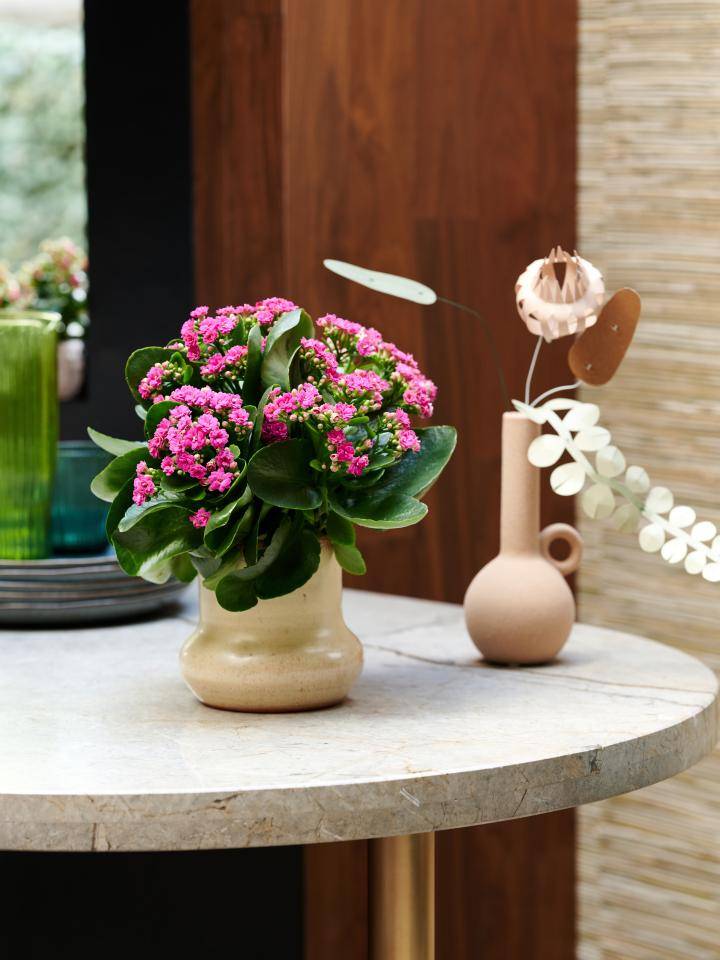
Where do succulents originally come from?
Succulents are very diverse, so their origins vary depending on the species. What all succulents have in common is that they have the ability to store moisture in their leaves, allowing them to survive in extreme conditions. This makes them true powerhouses!
- Many succulents, such as Echeveria and Kalanchoe, come from tropical and subtropical regions around the world. These plants are adapted to warm climates with plenty of sunlight and can survive well in dry conditions.
- Cacti are mainly native to American deserts. They thrive in extreme drought and developed to retain water perfectly.
- Some succulents, such as Sedum, originally grew in mountainous and rocky areas, such as the Alps.
- Aloes, such as Aloe Vera, are native to Africa and Madagascar. These plants are adapted to varying conditions, from dry deserts to more temperate climes.
- Succulents such as Agave originate in the Middle East and are adapted to dry and hot climates.
